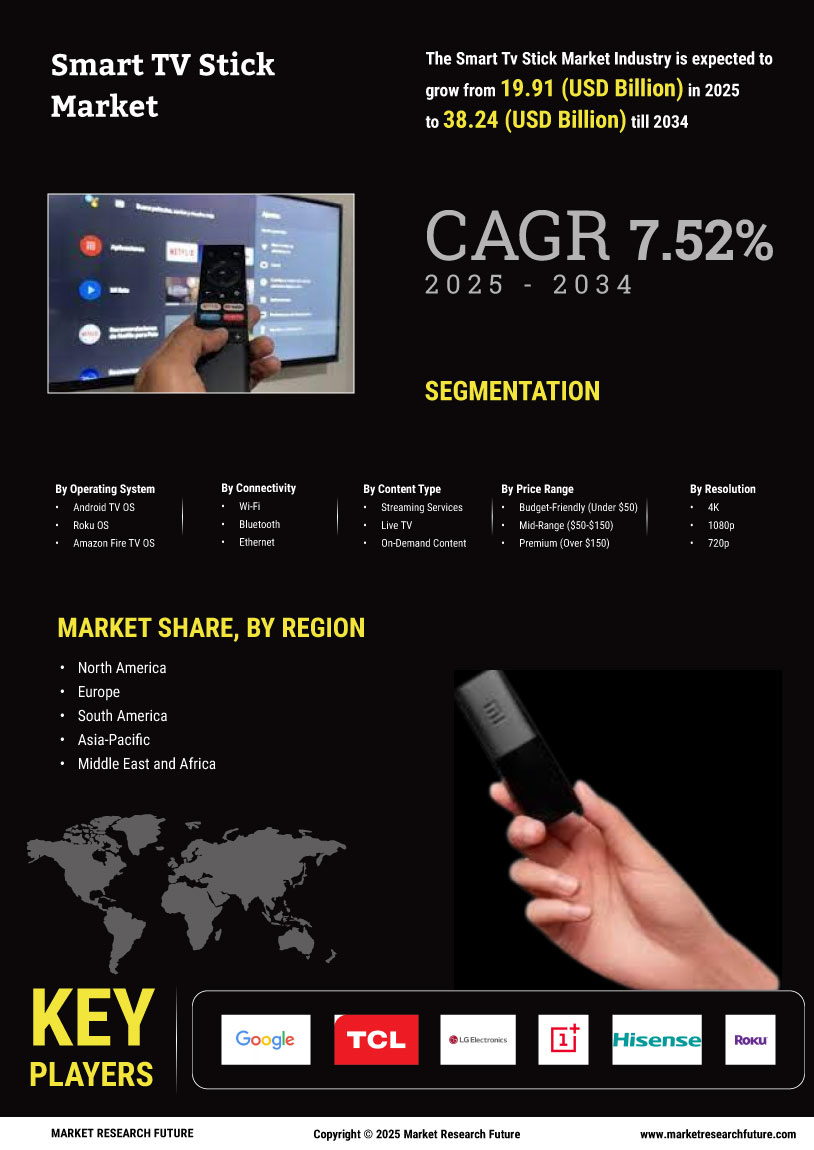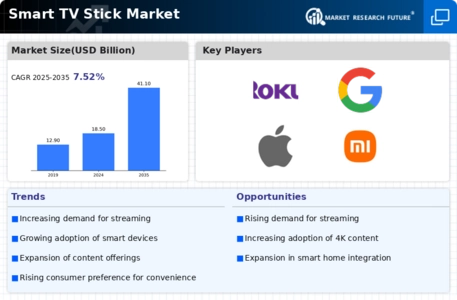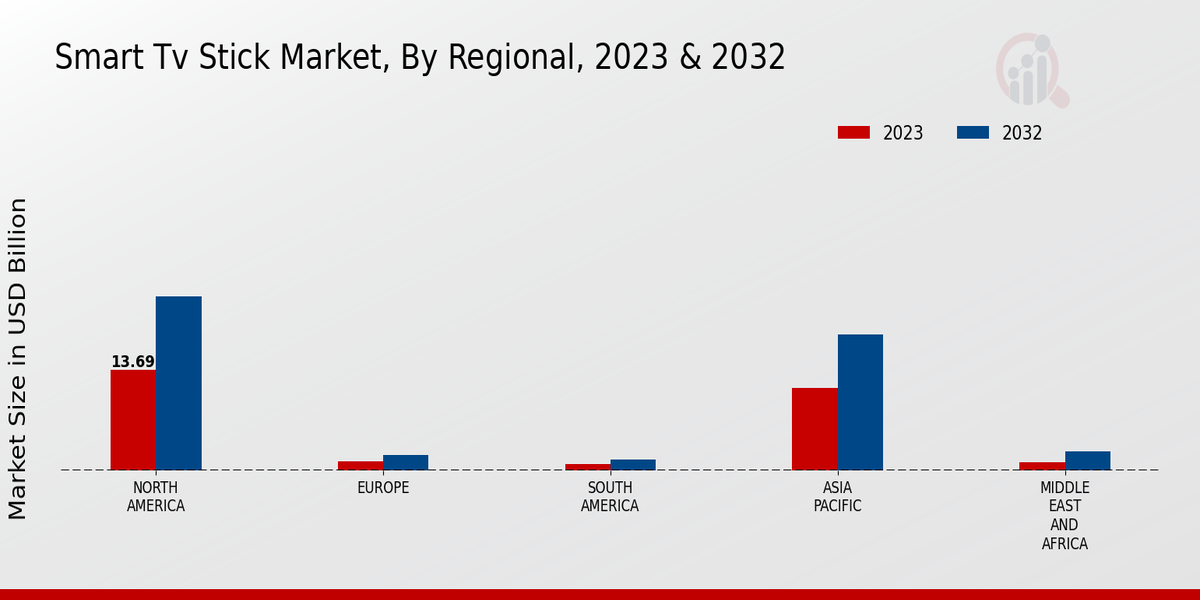Diverse Content Offerings
The Global Smart TV Stick Market Industry is significantly driven by the diverse content offerings available through various streaming platforms. Consumers are increasingly drawn to smart TV sticks due to the vast array of content, including movies, television shows, and live sports. This variety caters to different tastes and preferences, enhancing the overall appeal of smart TV sticks. As content providers continue to expand their libraries and introduce exclusive programming, the demand for smart TV sticks is likely to rise. This trend indicates a robust market trajectory, as consumers seek devices that provide access to a wide range of entertainment options.
Market Growth Projections
The Global Smart TV Stick Market Industry is projected to experience substantial growth, with estimates indicating a market value of 18.5 USD Billion in 2024 and a potential rise to 41.1 USD Billion by 2035. This growth trajectory suggests a compound annual growth rate of 7.52% from 2025 to 2035, reflecting the increasing consumer adoption of smart TV sticks. As more individuals embrace streaming technology and seek convenient viewing solutions, the market is poised for expansion. This upward trend underscores the importance of smart TV sticks in the evolving landscape of home entertainment.
Increased Internet Penetration
The Global Smart TV Stick Market Industry benefits significantly from the increasing penetration of the internet worldwide. As more households gain access to high-speed internet, the potential customer base for smart TV sticks expands. This trend is particularly pronounced in developing regions, where internet infrastructure is rapidly improving. Enhanced connectivity allows users to stream content seamlessly, making smart TV sticks an attractive option for consumers. The growth in internet users is expected to correlate with the market's expansion, contributing to the projected market value of 41.1 USD Billion by 2035. This dynamic suggests a strong future for smart TV sticks.
Affordability and Accessibility
Affordability and accessibility are pivotal factors influencing the Global Smart TV Stick Market Industry. Smart TV sticks offer a budget-friendly alternative to purchasing new smart televisions, allowing consumers to upgrade their viewing experience without significant financial investment. This affordability appeals to a broad demographic, including those in emerging markets where disposable income may be limited. As a result, the market is likely to see increased adoption rates among price-sensitive consumers. The combination of low-cost devices and the availability of diverse streaming options positions smart TV sticks as an attractive choice for many households, thereby driving market growth.
Rising Demand for Streaming Services
The Global Smart TV Stick Market Industry experiences a notable surge in demand for streaming services, as consumers increasingly prefer on-demand content over traditional cable television. This shift is driven by the proliferation of platforms such as Netflix, Hulu, and Amazon Prime Video, which offer extensive libraries of movies and series. In 2024, the market is projected to reach 18.5 USD Billion, reflecting the growing consumer inclination towards affordable streaming solutions. Smart TV sticks provide a cost-effective means to access these services, thereby enhancing their appeal. This trend is expected to continue, with the market potentially expanding significantly by 2035.
Technological Advancements in Smart TV Sticks
Technological advancements play a crucial role in propelling the Global Smart TV Stick Market Industry forward. Innovations such as 4K streaming capabilities, voice control features, and enhanced user interfaces are increasingly integrated into smart TV sticks. These advancements not only improve user experience but also attract tech-savvy consumers who seek the latest features. As manufacturers invest in research and development, the quality and performance of these devices are expected to improve, further driving market growth. The anticipated compound annual growth rate of 7.52% from 2025 to 2035 indicates a robust future for this segment.






